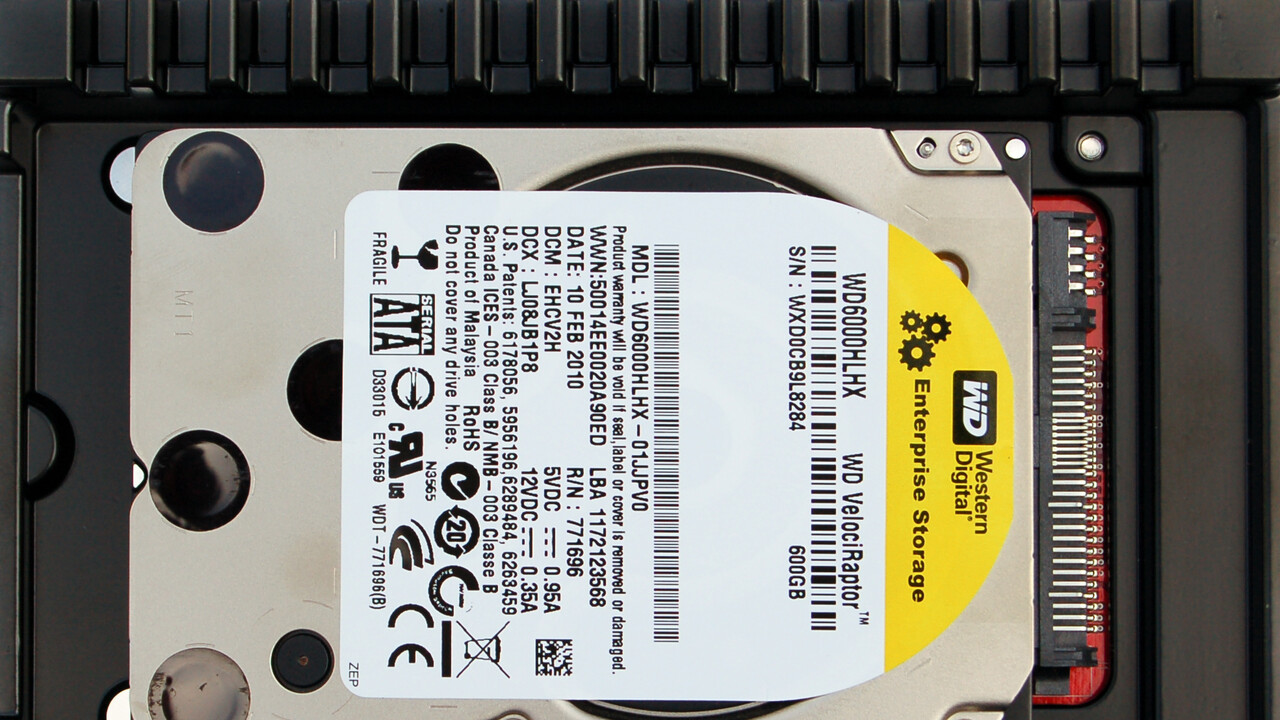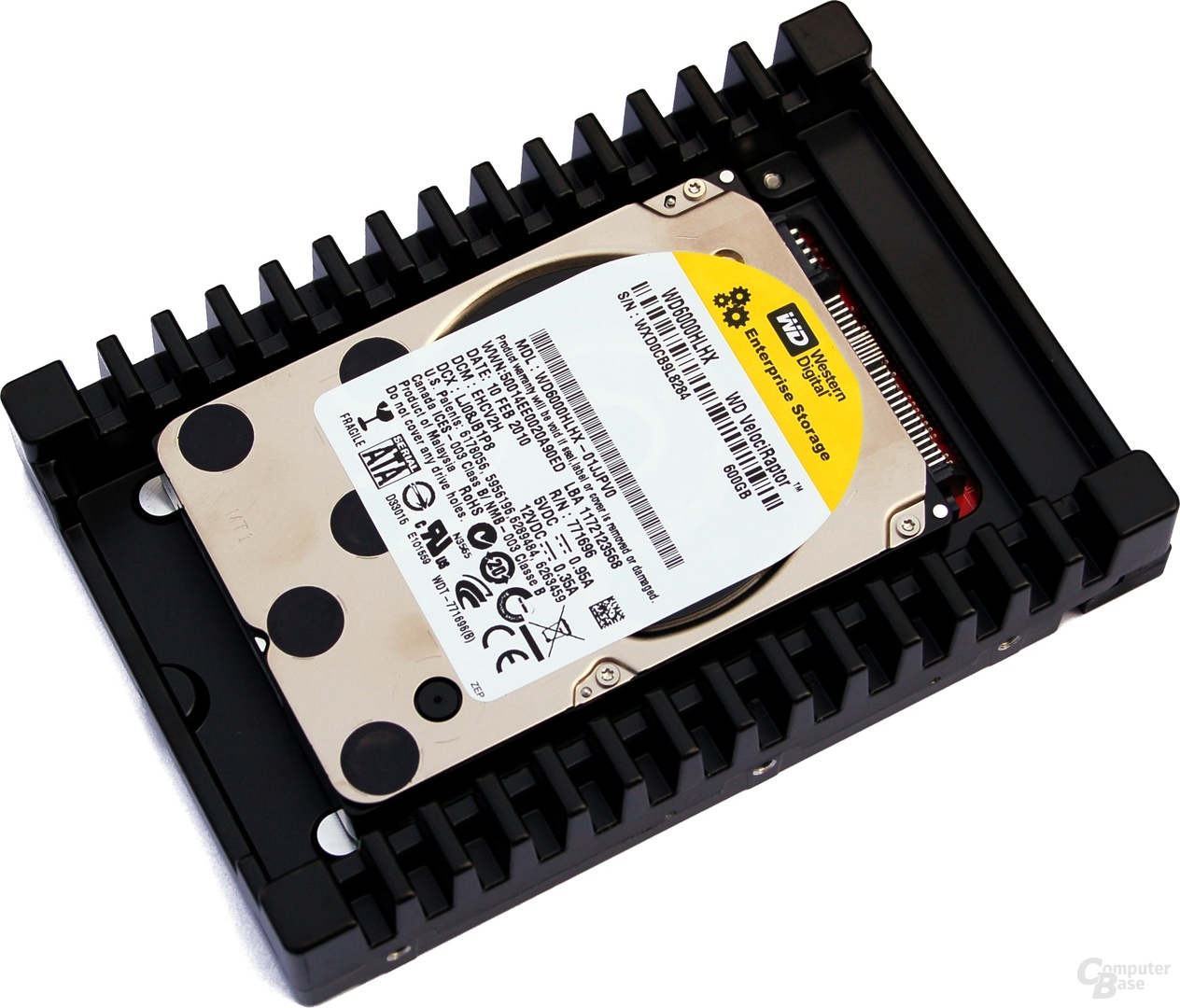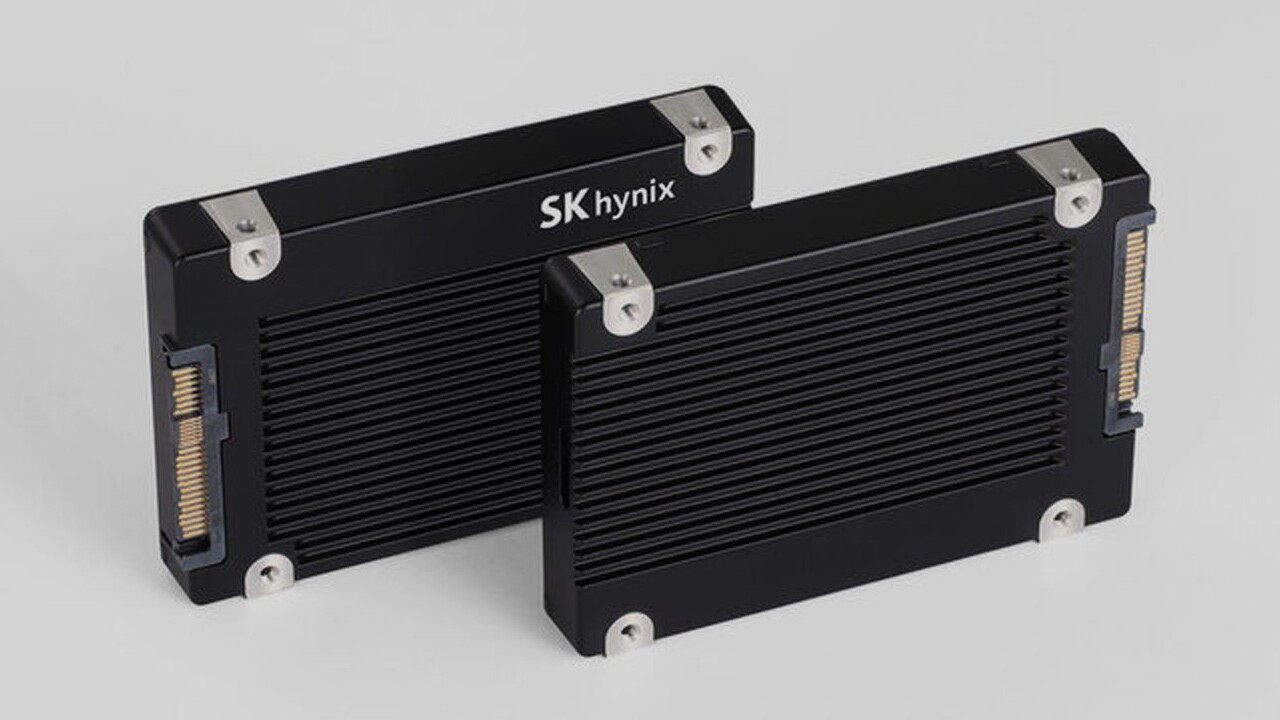In the test 15 years ago: Western Digital Velociraptor VR200m failed on SSDs 34 comments

Despite the emerging SSD market, there was still a demand for very fast conventional hard drives 15 years ago. With the Velociraptor VR200m and the Black Caviar with SATA 3.0 (test), Western Digital met this demand.
Fast hard drives with SATA 3.0
The two Western Digital hard drives primarily used the SATA 3.0 interface with up to 6 GB/s. With the Velociraptor VR200m, the claim was to develop the fastest SATA hard drive on the market. To achieve this, the manufacturer increased the data density of the three platters from 150 GB per platter to 200 GB.

Logo image 1 of 2
The Velociraptor itself retained a 2.5-inch form factor, but was installed in a 3.5-inch frame for cooling and damping vibrations. With 32 MB of Western Digital cache, it doubled the cache compared to the previous generation while maintaining the very high speed of 10,000 rpm. The price was very high at 258 euros for the 600 GB model for an HDD, but was at least lower than SSD prices at the time. Technical Data Model Western Digital Velociraptor VR200m
WD6000HLHX Western Digital Caviar Black
Capacity WD1002FAEX 600GB
(450GB) 1TB Platter 3 2 Cache 32MB 64MB TERT 10,000 RPM 7,200 RPM Interface SATA 6 Gb/s SATA 6 Gb/s Perceived Transfer Rate 145 Mbyte/s – Read/Write Power Consumption
(Manufacturer Specified) 6.4 watts 6.8 watts Idle Power Consumption
(Manufacturer Specified) 4.3 watts 6.1 watts Power Consumption
(Manufacturer Specified) 0.7 watts Power Consumption
(Manufacturer Specified) 0.7 watts Volume Consumption
(According to the manufacturer) 37 dB(A) (average) 33 dB(A) (average) Idle volume
(According to the manufacturer) 30 dB(A) (average) 28 dB(A) (average) MTBF 1.4 million hours 1.2 million hours Warranty 5 years Price starting at 85 euros
The Caviar Black was aimed at the mass market with a price of 85 euros and a TB capacity. Fundamentally, the Caviar Black was designed differently from the Velociraptor. It relied on a conventional 3.5-inch platter, the usual 7,200 rpm, and had only two platters instead of three. The manufacturer did not provide maximum transfer rates for the Caviar Black. Fast – for a hard drive
The Western Digital Velociraptor VR200M met the manufacturer’s specifications and reliably ranked first in the benchmarks. At least as long as only hard drives were considered. Compared to an SSD like the Corsair P128, the Velociraptor often had the mechanical feel of a hard drive, and was fundamentally slower than non-mechanical SSDs. The Caviar Black delivered good performance, but lacked the SATA 3.0 interface. The speed limitation was the hard drive itself, not the interface.
A similar picture emerged in real-world tests. While the Velociraptor VR200m was faster than all other hard drives, the Corsair P128 couldn’t hold its own. This was particularly noticeable in program launches or the boot process, which was twice as fast on the SSD, for example. Another disadvantage of hard drives was their high power consumption, especially in the case of the Velociraptor with a 10,000 rpm capacity.
Conclusion
With the Velociraptor VR200m, Western Digital achieved its self-imposed goal of having the fastest hard drive on the market. For most users, the combination of a fast, low-capacity SSD and a slow, high-memory hard drive was the best fit. The advantages of flash memory were far greater in everyday life than a slightly faster hard drive. If you really wanted the fastest hard drive, the Velociraptor VR 200M was well worth the premium price. In the “In the Test 15 Years Ago” category, the editorial team has been taking a look at the test archive every Saturday since July 2017. We list the last 20 articles published in this series below:
Corsairs Nova SSDs Convince on Whole Line Kerne for Everyone with the AMD Phenom II X6 1090T Before the GeForce GTX 470 Was the Best Fermifractal First Work Designs Set R2nvidias GeForce GeForce GFORCE GEFöhn 2.0LMX Superleggera with NVIDIA and AMD Core i780 CPU with Six Sparking Kernel Pentium G6950 and Core i3-530. 79 Euro HTC Touch2 was a savings smartphone for the 270 Euro advantage of SSDs over HDDs in the Alltamrazer Orochi for mobile gaming via Bluetooth. BlackBerry Bold 9700 was a potential Super Mario Bros. smartphone.
Even more content of this type and many other reports and anecdotes can be found in the Retro Corner of the TechAstuce forum.
Topics: Retro SATA Storage Western Digital

Alice guides you through the best storage solutions, from ultra-fast SSDs to secure cloud options.

